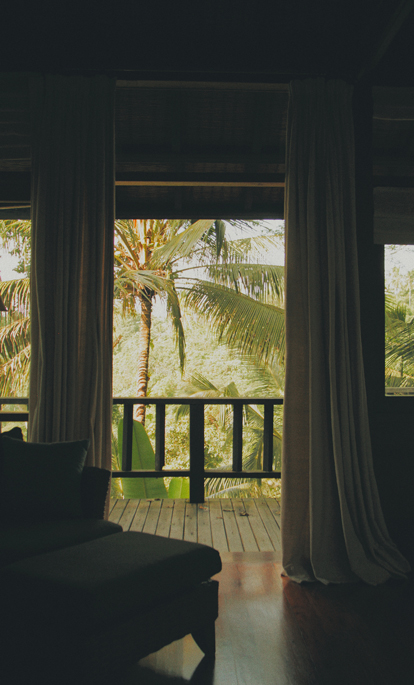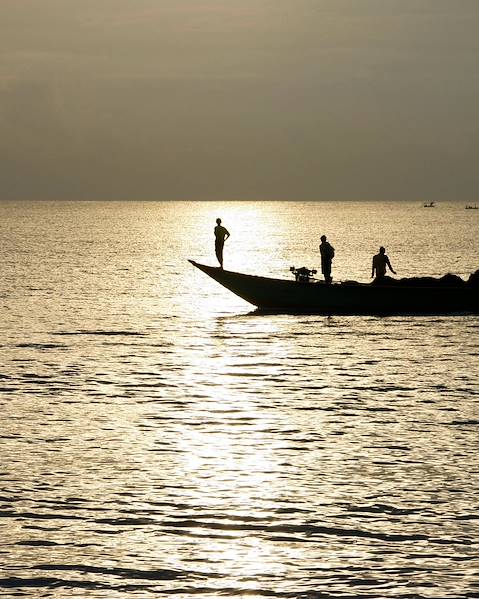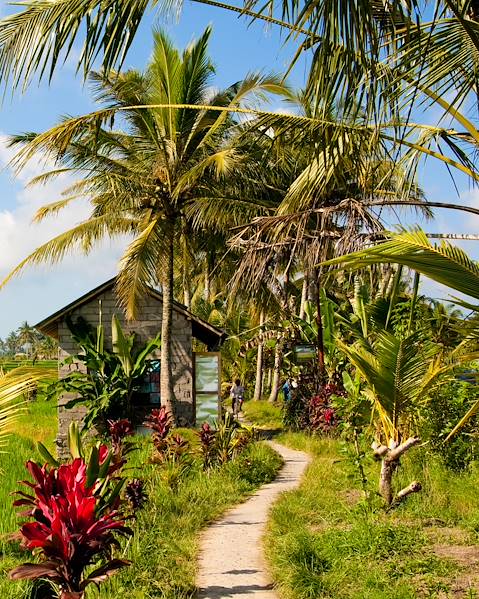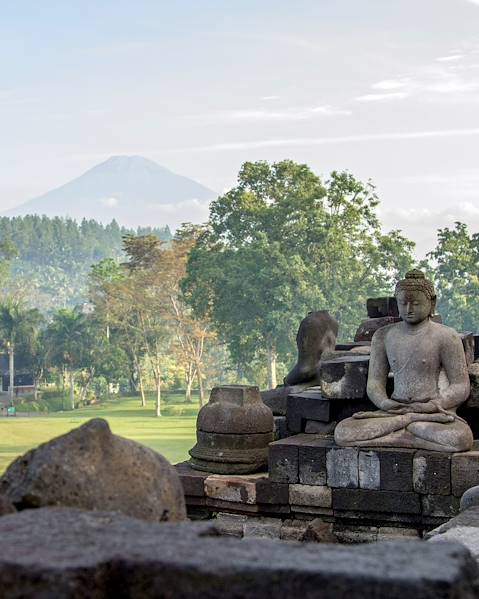Population
272,013,917 inhabitants (2019).
Official language
Indonesian Malay (Bahasa Indonesia).
Languages of Indonesia
The culture of Indonesia is diverse. It’s obvious in the 583 languages and dialects which are recognised by Indonesian authorities - and the hundred-and-something more that aren’t. After Indonesian, which 80% of the population speak, Javanese follows (32%), followed by: Sundanese (16%), Madurese (5%), Minangkabau (2%), Buginese (1.9%) Palembang Malay (1.4%), and Banjarese (1.3%). Bahasa Indonesia, from the Austronesian family of languages, is designed from various languages of the country. 70% of Indonesians regularly practice it and it is the language of the government and media. It is also the only lingua franca spoken throughout the country. English is the most popular foreign language of communication and it’s widely understood. The language of colonial times, Dutch, is still spoken by a small percentage of older Indonesians, but its use is fading gradually.
People of Indonesia
There are over 750 ethnic groups in Indonesia, divided into three large families. The Austronesian are the biggest: the Javanese (Java) represent 40% of the total population; the Sundanese (East Java), the Madurese (Java and Bali), the Minangkabau (Sumatra) and Malays (Kalimantan) are also large groups. Another family, Papuans, number about a million; they mostly live in West Papua Province and Timor island. The Chinese arrived in Indonesia at the beginning of the Christian era and are a significant minority in the country.
Religion in Indonesia
The Indonesian government recognises six religions: Islam, Protestantism, Catholicism, Hinduism, Buddhism and Confucianism. Muslims are a large majority (85%), with almost all practicing the Sunni branch of Islam. Protestants make up about 6.5% of the population and are well established in Papua. 3% are Roman Catholic, 1.6% Hindus, many of whom are of Balinese descent and 0.7% are Buddhist, with a predominant Chinese following.
Indonesia National Holiday
August 17: Anniversary of Independence (1945).
Holiday Schedule
New Year (January 1), Ascension Day (40 days after Easter) and Christmas Day (December 25) are all national holidays. There are three or four holidays that include parades and patriotic events centred around Independence Day on August 17. With a majority Muslim population, events in the Islamic calendar are important: Eid al-Fitr marks the end of Ramadan fasting; Eid al-Adha commemorates Abraham’s sacrifice; Maulaud celebrates the birthday of the Prophet; Awal Muharram is the day of the Muslim New Year. Dependent on the lunar calendar, dates change every year. In March-April Nyepi, the Balinese New Year, is celebrated and marked with a day of fasting, silence and meditation. Vesak (April-May) commemorates Buddha's awakening. Added to the national calendar are many local festivals, and many more special events that punctuate the different religious calendars.
History of Indonesia
Indonesia's history centres around its geography and status as a maritime crossroads and the sea has played a major part in its story. One of the first major powers of the country is the Srivajay Kingdom, which became established in Sumatra and controlled the Strait of Malacca. The Kingdom traded with India and China and society prospered. The Syailendra dynasty, which had ties to Srivajay, took the reigns in the eighth century and also flourished. The Borobudur Temple Compounds, one of Buddhism’s most sacred sites, was built during the Syailendra reign and many other hugely significant monuments were erected. The next big power to dominate Indonesia was a Hindu kingdom called the Majapahit Empire, which quickly ruled across most of Indonesia. In the fifteenth century, the rulers of Malacca, the largest port in Southeast Asia, converted to Island. At the same time, Admiral Zheng He (1371-1433), a Chinese mariner and explorer, noted the presence of Chinese Muslims in Java.
In fact, between the 15th and 17th centuries, the combined growth of maritime trade, Islam and Chinese communities overseas determined the development of the region and gradually, many Indonesian ports converted to Islam. In the sixteenth century, the Aceh Sultanate extended its control over the east coast of Sumatra. The end of the century saw a slight restoration of Hindu culture in the kingdom of Mataram, whose ruler, Senopati, helped incorporate Hindu teachings into the new Muslim practices being adopted. Yet, Islam pushed on and was fostered by the vast majority of the population, even the Dutch. The Portuguese imposed a European presence in the area when they settled in Malacca in 1511.
The Dutch ousted them in the 17th century and in 1602 the Dutch East India Company was founded to control Indonesia’s trade. On the ruins of what is now Jakarta, in Java, Batavia was founded in 1619. The Company became a prime trader in the area and during the 17th century, it gradually extended its power. By the end of the eighteenth century, the Dutch East India Company had a stranglehold on the Moluccas, South Sulawesi and the eastern half of Java. But the empire failed and the Dutch East India Company went bankrupt. In 1799 the Dutch government took over its territories. In 1825 until 1830 the Javanese War was fought and led by Prince Diponegoro, but eventually failed against the Dutch. During the 19th century, the Dutch extended their influence across the country and fought a number of wars against Bali until it was finally conquered in 1906.
In 1873 was the Aceh War, which went on until 1904 when Aceh was brought under Dutch control. In 1901, Queen Wilhelmina (1880-1962) launched the Dutch Ethical Policy, which defined the colonial program: education, irrigation, emigration. The Budi Utomo (meaning ‘prime philosophy’) was founded in 1908, and was the first autonomous indigenous political organisation of Indonesia, which aimed to provide a modern education to Indonesians. It is often thought of as the starting point of organised nationalism. In 1912, Javanese traders established Sarekat Islam, a nationalist group that boasted a significant number of followers. After World War I, Communists gained momentum. In 1927, led by Sukarno, the the Indonesian Nationalist Association, later the Indonesian Nationalist Party, was formed. Over the next decade, Indonesian nationalists were severely repressed by the Dutch government. In January 1942, the Japanese landed in the archipelago and by March the last Dutch troops had surrendered.
By 1945, the Japanese surrendered and Indonesian independence was proclaimed on August 17, 1945. Sukarno returned from exile and became the first president. The Dutch did not want to release power and a bitter struggle ensued until finally, in December 1949, Dutch troops withdrew and the Republic of the United States of Indonesia (RIS) was formerly recognised. The new state failed to truly get off the ground though, with communist and Muslim rebellions in Java, and an uprising in Maluku. A unitary state replaced the RIS – Sukarno’s power was increased and the power of parliament was reduced in a system he called ‘guided democracy’. The early 60s were marked by tensions with Malaysia. The administration of West Papua was however entrusted to Indonesia in 1963. The US commitment in Vietnam caused the realignment of Indonesia. In 1966, Sukarno was forced to hand over power to General Suharto following a failed coup, who established a dictatorship. The region saw relative stability during his reign and the country reinstated many Western structures: the UN, World Bank, and IMF. In 1975, the Indonesian army invaded a Portuguese colony, East Timor, which had declared its independence.
Following a long conflict, in 2002, East Timor achieved formal independence in 2002. The economic situation in Indonesia deteriorated from the late 80s, which continued into the late 90s when the country was hit by a financial crisis. Riots ensued and Suharto resigned in May 1998. The following year, the first democratic elections since 1955 were held. During the 21st century the economy began to recover and today, Indonesia’s economy continues to grow steadily.
Policy in Indonesia
Indonesia is a Presidential Republic. The president is elected by universal direct suffrage (two five-year terms at a maximum) – he gives his guidance to national policy, appoints the government and is the army chief commander. The president is the real boss of the executive. Legislative power is shared between the presidency and parliament. This consists of two rooms: the People's Representative Council (DPR), 550 members elected for five years and the Representative Council of Regions (DPD), whose members are elected for five years and the number should not exceed one third of the deputies of the DPR. The Supreme Court is the cornerstone of the judicial.
Famous Indonesians
Sukarno (1901-1970)
Born Koesno Sosrodihardjo, Sukarno was the first President of Indonesia and is known as one of the fathers of the country. A pioneer for independence from the Netherlands.
Abdurrahman Wahid (1940-2009)
Known as Gus Dur, Wahid was a figure of the opposition to the dictatorship of Suharto and the President of Indonesia from 1999 to 2001. Wahid was an enlightened Muslim intellectual and engaged in international philosophical dialogues. Translator of Sartre in Indonesian.
Raden Adjeng Kartini (1879-1904)
The daughter of Javanese aristocracy, Kartini was a figurehead in the fight for education and rights of Indonesian women. Her birthday is now celebrated as a national holiday, Kartini Day.
Rudy Hartono (born 1949)
A master badminton player, known as one of the greatest of all time, Hartono won the All-England Championships seven times, the World Championships once and is a four times winner of the Thomas Cup (Davis Cup badminton).
Alfred Russel Wallace (1823-1913)
A British naturalist, geographer and anthropologist whose thoughts on biogeography resulted in the theory of evolution. The ‘Wallace Line’ marks the division between the ecozones of Asia and Australasia, which runs through Indonesia.
Etiquette
Tipping is at your discretion in Indonesia. Service charges are often added to hotel and restaurant bills, but if this isn’t the case and the service exceeded your expectations, leaving a little extra is always appreciated. The currency in Indonesia is the rupiah. For a day with a guide and a driver, around 50,000 and 100,000 rupiah, depending on your satisfaction, is a more than respectable show of thanks. Be sure to always hand your tips directly to the person who carried out the service, in separate envelopes if needed. Taxi drivers, from the airport to your hotel for example, can expect anything from 10,000 to 30,000 rupiah, depending on the length of journey and how helpful they were. As for service personnel, customs vary widely – it’s best to align your tip with the economy of the local community – the price of a beer or cup of tea will give you an outline on the cost of living and what a fair amount is for a job well done. For another guideline, the average monthly gross wage in Indonesia is around £216.
Life in Indonesia has such a peaceful serenity about it that it would be easy to think it is overly liberal. And while Indonesians are indeed a tolerant people, there are cultural differences worth noting. Do not talk with your hands on your hips, which is seen as challenging and untrustworthy. When pointing, use the whole thumb or hand rather than the index finger. Overt displays of affection in public are not considered polite. The culture of Indonesia will have you dressing modestly in everyday life but especially when entering a mosque or place of worship, where legs and shoulders should be covered. You should also remove shoes before entering religious places and people’s homes.
Be mindful when taking photographs – always ask permission and refrain from photographing religious ceremonies. It is forbidden to take photos of some public buildings, so always check first. Above all, be patient and smiling – Indonesians are always welcoming and willing to help if you’re unsure what’s required. Timekeeping can be a languid concept though, so it’s worth switching into holiday mode and an altogether slower pace when in this magical nation.
Shopping
Beautiful silver jewellery, batik masterpieces (printed fabrics in reserve wax), stunning ikat designs (a dying technique used to pattern textiles), exquisite clothing, Chinese porcelain, basketry, bamboo and rattan furniture – the handicrafts of Indonesia are the stuff of shopping dreams. Night markets are a magical way to peruse what’s on offer and there are shops full of goods of all kinds. On the outskirts of the cities, artisan villages are the perfect place to bag a bargain and take a piece of Indonesian culture home with you as products are often priced lower than in tourist hotspots.
Food in Indonesia
Indonesian culture is interwoven through its cuisine, which is a feast for the eyes and the taste buds. But much of Indonesian cooking is a product of the various and numerous influences it’s had over time. As an equatorial archipelago, rice, chilli and fish (dried, smoked or pulped) are mainstays on the national menu. To this, a full range of meats, vegetables, fruits and spices are added, for a veritable banquet of Indonesian dishes. The kitchen is packed with fiery spice. Nasi Padang is a white rice dish that is made up of various elements, depending on the mood of the cook. It mainly consists of meat, fish, shrimp, eggs. Gulai kambing is a rich and spicy mutton stew with coconut milk, while rendang is a fiery beef stew with spices and coconut milk.
In Java, a dish of stir-fried water spinach, water chestnuts and shrimp paste is a tasty specialty, as is ayam goreng, deep fried chicken that comes with many variations of accompaniment. In Bali, throughout Denpasar, Sanur and Kuta, there are French restaurants, Chinese, Japanese, Italian, Indian and even Danish. Still, the local cuisine is delicious. The island has its version of the Rijsttafel (rice table) developed by the Dutch, which includes white rice and a score of various excellent dishes with condiments. Nasi goreng is another lip-smacking favourite that consists of rice and eggs, vegetables and shrimp.
Drink in Indonesia
We don’t recommend drinking Indonesia’s tap water, but bottled water is in plentiful supply as well as various soft drinks and fresh fruit juice. Lassi is a favourite drink borrowed from India and is made with fermented milk and flavoured. Bintang and Anker are some of the country’s best-known brands of beer. Coffee (kopi) is soluble or infused directly into the cup – it is usually a local production of varying quality. Jasmine is served in most places and it is delicious.
















